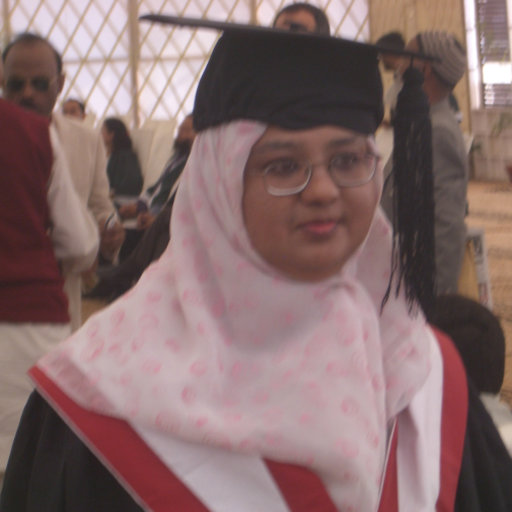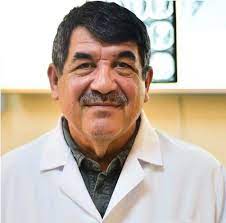Scientific Program
Keynote Session:
Oral Session 1:
- WHAT, WHEN, WHERE, AND HOW- HAPPENINGS OF COVID-19
Title: Myocardial Infarction Without Arterial Obstruction in Patient Post COVID 19 Treatment
Biography:
Huang Wei Ling has completed her Graduation in Medicine in Londrina State University. She is Specialist in infectious and parasitic diseases, a General Practitioner and Parenteral and Enteral Medical Nutrition Therapist. She was the In-charge of the Hospital Infection Control Service of the City of Franca’s General Hospital, responsible for the control of all prescribed antimicrobial medication.
Abstract:
Introduction: Some risks factors assotiated wuth COVID 19 infections were estableished such as coronary artery disease in patients with SARS-CoV-2 infections. The use of highly concentrated medications accorfing to Ardnt Shultz Law can induce reduction in the vital energy, leading to stagnation of Blood and propensity to have myocardail infaction even without arterail obstruction.
Purpose:Â To demonstrate that patient with COVID 19 infection that received highly concentrated medications to treat this infection, have more propensity to develop myocardila infarction some days after the treatment instituted.
Methods: Through one case report of 42 years-old patient with history of acquired COVID 19 on january 2nd 2021, he was admited in the hospital due to dyspnea symptons, myalgia, and needs oxigenation. He received the medications, ivermectine, hydroxicloroquine, corticosteroids . After 18 days of the initial manifestations, the patient felt pain in the chest and went to the hospital and they found that his troponin were increasing gradually and after two hours of it increased many times and the physician decided to admit him again in the hospital to make more exams. The patient was submitted to cattheterization and the result of this procedure were that all his coronary were in perfect state of health without any obstruction and they treated him as he had myocardial infaction. After three months , the patient went to the author´s clinic to evaluate his condition and she did chakras’ energy centers measurement.
Results: The results of this condition that revealed that all his chakras’ were in the lowest level of energy with exception of the seventh that was normal. The author began his treatment with the use og homeopathies medications according to the theory Constitutional Homeopathy of the Five Elements based on Traditional Chinese Medicine. Conclusion; the conclusiopn of this study is that patients when treated with highlt concentrated medications to treat SARS-CoV-2 infection can develop myocadial ingaction without arterial obstruction due to energy deficiency state that agraveted many times due to the use of highly concentrrated medications used to treat this kind of infection nowadays.
Title: What, When , Where and How – Happenings of COVID-19
Biography:
Samiyah Tasleem has done Internship in Tabros Phrama, Training in Swiss Pharma as a microbiologist in quality control department for analysis of raw water, D.I. water and microbial contamination in raw material, Teaching Experience as Assistant Professor in Department of Pathology (Microbiology) Hamdard College of Medicine and Dentistry Hamdard University, Teaching Experience as Assistant Professor in Department of Microbiology, FUUAST, Karachi. (IPFP/HEC).
Abstract:
Covid illness 2019 (COVID-19) is a contagious disease caused by severe intense respiratory disorder Covid 2 (SARS-CoV-2). The originally realized case was distinguished in Wuhan, China, in December 2019. The illness has since spread around the world, prompting an ongoing pandemic. Serious intense respiratory condition coronavirus 2 (SARS-CoV-2) is a novel severe intense respiratory disorder Covid. It was first separated from three individuals with pneumonia associated with the cluster of intense respiratory sickness cases in Wuhan. All underlying provisions of the original SARS-CoV-2 infection molecule happen in related coronaviruses in nature. Outside the human body, the infection is obliterated by family cleanser, which blasts its protective air pocket. SARS-CoV-2 is firmly identified with the original SARS-CoV. It is thought to have a creature (zoonotic) beginning. Hereditary examination has uncovered that the Covid hereditarily groups with the genus Betacoronavirus, in subgenus Sarbecovirus (lineage B) along with two bat-inferred strains. It is 96% indistinguishable at the whole genome level to other bat Covid tests (BatCov RaTG13).
The a large number of SARS-CoV-2 variations are assembled into either clades or lineages. The WHO, in a joint effort with accomplices, master organizations, public specialists, foundations and analysts, have set up classification frameworks for naming and following SARS-CoV-2 hereditary genealogies by GISAID, Nextstrain and Pango. Right now, the master bunch met by WHO has suggested the naming of variations utilizing letters of the Greek Alphabet, for example, Alpha, Beta, Delta, and Gamma, giving the support that they "will be simpler and more down to earth to talked about by non-logical audiences." Nextstrain divides the variations into five clades (19A, 19B, 20A, 20B, and 20C), while GISAID divides them into seven (L, O, V, S, G, GH, and GR). The Pango device bunches variations into lineages, with many flowing heredities being classed under the B.1 lineage.[ A few remarkable variations of SARS-CoV-2 arose in late 2020. Group 5 emerged among minks and mink ranchers in Denmark. After severe isolates and a mink killing effort, it is accepted to have been destroyed. As of July 2021, there are four predominant variations of SARS-CoV-2 spreading among worldwide populaces: the Alpha Variant (formerly called the UK Variant and formally alluded to as B.1.1.7), first found in London and Kent, the Beta Variant (formerly called the South Africa Variant and authoritatively alluded to as B.1.351), the Gamma Variant (formerly called the Brazil Variant and formally alluded to as P.1), and the Delta Variant (formerly called the India Variant and authoritatively alluded to as B.1.617.2) Utilizing entire genome sequencing, the study of disease transmission and displaying propose the Alpha variant VUI-202012/01 (the first variation being scrutinized in December 2020) in the B.1.1.7 ancestry sends more effectively than some different strains.
Title: Covid Rehabilitaion
Biography:
Zoya Zabeen is a student pursuing my carrier with a Bachelor's degree in “Cardiology Techniques “at Jamia Hamdard University, India.
Abstract:
COVID is a pandemic everyone's life is being affected Corona Virus is a SARS Disease that come under viral (SARS severe acute respiratory syndrome)
MODE OF TRANSMISSION: Droplet infection
INCUBATION PERIOD: 2-7days
SYMPTOMS: Fever, Chills, Muscle-ache, Cough, Dizziness, Running nose, Vomiting, Diarrhoea.
TREATMENT: avoiding contact with the sick, wearing a mask, using sanitisers Taking proper precaution bemo neat and clean and following some major steps.
REHABILITATION: Taking good diets,boosting your Immunity, Building a self-defence by enhancing acquired Immunity,drinking lots of water, taking a healthy rich diet doing exercise
Title: New Approaches to the Initial Treatment of Chronic Obstructive Pulmonary Disease: What we have to know for right management ?
Biography:
Alizamin Sadigov is a professor doctor with more than 30 tears of work experience in nursing, education, and research have graduated from Atlantic international university(AIU) in a doctorate and have received Ph.D. and MHSs degrees.Have graduated from Saint Petersburg medical university and have received a Medical Doctor degree. He also have two honored degrees: FCCP(Fellow at American College of chest physicians)and ATSF(Fellow at American Thoracic Society). He is the head of the pulmonary medicine department at the hospital clinic of a medical university.
Abstract:
As we know that chronic obstructive pulmonary disease(COPD) is very complex ,because it is the result of interactions between several environmental factors and there is also we do not forgot the importance of genetic background. The clinical presentation, chronic bronchitis ,dyspnea, exacerbations, is not the same from one patient to another. When we look at the pathology, and the anatomic features, some patients are mostly bronchial, others are mostly emphysematous , and the comorbidities ,anxiety, cardiovascular comorbidities, osteoporosis, cancer ,are very different from one patient to another. As result of these suggestions not all patients are the same, and as a result it is very important that to provide patients with a personalized approach. Several years ago, GOLD guidelines has supported the approach as treating the disease ,but now this guidelines supports approach the need to treat the patient. We have to consider the significantly impact of COVID-19 infection to the COPD management .particularly, the diagnostic challenges of disease related to impossibility of use of spirometry as functional test for diagnosis of COPD. There is significantly limitation of the use of this tool for assessment of lung function related to this procedure is high aerosol generating .And once did spirometry ,we can classified the patient in terms of lung function impairment .But for the last year ,patients with suspected COPD have not been having spirometry. We have the new GOLD guidelines ,which was released in November 2020.Based on new GOLD document we will categorize the patients by symptoms, and exacerbation history. It is important the initiation of the treatment of patients with COPD by assessing of the symptoms and exacerbation history and we have to firstly try the use of single LABA or LAMA at the beginning of the diseases treatment and if the patients remains symptomatic ,it would be an element of trying a LAMA/LABA combination, because this combination is better choice for symptomatic patients. And, going back to the pharmacological treatment with which you initiate therapy for these patients ,one important message of the table on treatment initialization in the GOLD document is that never initiate with triple therapy with LABA/LAMA/ICS combination. And if the patient is very symptomatic ,dual bronchodilation can be a very good option for treatment initiation. And for the D patients ,again, if we initiate with only one bronchodilator it should be a LAMA, because these are the best preventions of exacerbations. And the use of inhaled corticosteroids (ICS) in patients with exacerbation history with consideration of the level of blood eosinophilia and accordingly new GOLD guidelines we can use of ICS just in D patients. However , there are some risks that can be associated with ICS ,such as pneumonia, and some systemic effects, osteoporosis for example, or diabetes, et cetera that have been associated with these drugs. In summary, the problem with this disease is that it is very heterogeneous. We definitely have to personalize care ,which is not that complex. For each patient we need to assess-lung function, symptoms , exacerbations-and then choose the right treatment .And before choose medication, we need to implement all the non-pharmacological components first. There are most important in this topic the discussion of smoking education, vaccination, activity, et cetera. And then for the treatments, the message is to start with bronchodilators ,and then there are some patients in whom ICS may be of use ,so we need to reassess the patient very regularly.





